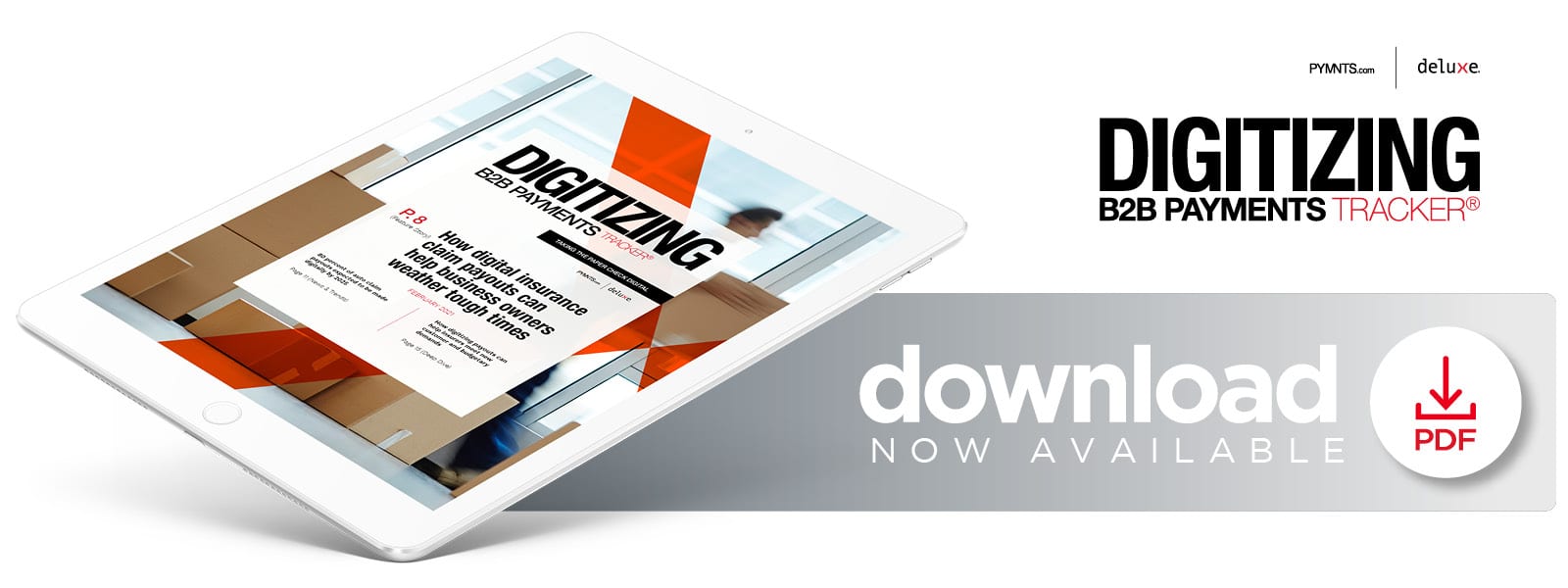Deep Dive: How B2B Insurance Firms Are Digitizing Payouts, Operations To Meet New Demand

Most businesses must safeguard themselves from potential emergencies by purchasing various insurance plans, which can range from workers’ compensation for employees who are injured on the job to property damage coverage that can help them rebuild if they suffer fire or storm damage. Firms that have paid their insurance premiums on time for months or years on end understandably want to be certain that any necessary claim payouts will arrive swiftly and conveniently when crises hit.
Insurance carriers are facing their own financial concerns, however. Natural disasters, the pandemic and other disruptions have significantly increased the number of claims that they must pay out, and the ongoing economic downturn has made many consumers and business clients less interested in — or unable to pay for — various insurance products.
These dual pressures make it important for insurance companies to deliver swift, convenient claim payouts that are both cost-effective to issue and conducive to customer retention. This Deep Dive examines how digital tools can help insurers disburse funds in more efficient, budget-friendly ways and how these investments can help them please policyholders.
Insurers Battle Reduced Profits
Insurance firms’ operational costs are rising as they are being forced to pay out more claims while grappling with ongoing crises like climate change and the pandemic. Companies may be better equipped to handle such expenses if their payment processes are efficient, however, and this is encouraging some to consider ways to reduce or eliminate the use of resource-intensive methods like paper checks.
Rising costs and revenue losses are top-of-mind for North American property and casualty (P&C) insurance providers. P&C insurance plans protect policyholders in the event that their property is lost or damaged or if policyholders are found liable for injuries to other individuals or damage to their property. These insurers have recently had to pay out more money as more of their policyholders experience qualifying situations.
Recent research tracked 50 P&C insurers and found that they made less profit in the first half of 2020 than they did during the same period in 2019. These firms collectively reported that they had to pay out $6.8 billion to policyholders for pandemic-related claims, $7 billion due to claims regarding “natural catastrophes” and $751 million for claims related to “civil unrest.”
Insurers have also seen income fall during the economic crisis as clients’ needs shift. Many employers have held layoffs and now have fewer employees to protect with workers’ compensation, meaning they are buying less of this coverage. United States-based sales of workers’ compensation plans are not expected to return to their pre-pandemic levels until 2023, in fact. Financial concerns like these make it all the more important for insurers to control their own costs and boost their customer appeal.
Revamping Their Offerings
The pandemic has encouraged more insurers to rethink their processes and determine how modernizations can make them more efficient and effective. The Association for Cooperative Operations Research and Development — a global standard-setting organization for the insurance industry — reported last July that more than half of the 130 largest global insurers are exploring how to use digitization to benefit their operations, for example.
Insurers looking to reduce costs and improve efficiencies could consider moving claim payouts away from paper checks in favor of digital disbursement methods. Such decisions must not be taken lightly, however, as paper checks have been a mainstay in the field and many insurers’ existing workflows are designed with the payment method in mind. Moving away from physical checks could require identifying alternative payout methods that are easy for business clients to accept and offer similarly rich payments data.
Reducing or eliminating physical checks could confer notable benefits for insurers, such as helping them avoid expenses related to purchasing envelopes and mailing them out. Digital payout methods may also be easier for insurers to use and business insurance customers to receive at a time when fewer employees are visiting their offices to print checks or collect mail. This could see firms adopt eChecks or other detail-rich digital payment methods instead.
Catering To Clients’ Demands
Demand for faster claim payouts is heating up among individual insurance customers, and this trend could sweep into the business sector as executives begin to expect similar conveniences in their professional lives. A 2019 PYMNTS survey of 5,500 U.S. consumers found that more than 30 percent would like to receive insurance payouts via instant disbursement methods — a sentiment that may be growing even more popular during the pandemic. It found that many consumers still lacked access to the digital methods they preferred, however, with more than 52 percent of respondents saying they received insurance disbursements via paper checks as recently as 2018. This could suggest untapped demand for instant insurance disbursements, enabling the carriers that can meet these new needs to stand out among the competition.
Such moves are likely to be well-received by consumers — a 502-respondent U.S. consumer survey conducted in 2019 found that 53 percent would be willing to switch carriers to get instant claims disbursements. It also found that instant or same-day claim payouts were “somewhat” or “very” important to 82 percent of millennials and 81 percent of Generation Z respondents.
Some insurance carriers have been rethinking their strategies to accommodate these new expectations. The August 2020 Insight to Solutions virtual event held by insurance provider-focused strategic advisory firm Strategy Meets Action found that 67 percent of registrants viewed digitizing payments as an important aspect of their digital upgrade plans. Participants relayed various motives for making such upgrades, with 53 percent looking to reduce their internal expenses and 64 percent saying they wanted to be less dependent on paper checks.
Policyholders that have experienced emergency situations want to receive their claim payouts quickly, and many clients are no longer willing to wait for checks in the mail. Insurers must address their business customers’ needs or risk losing them to competitors. The firms that adopt digital payment methods may find that doing so not only creates smoother experiences for clients but also reduces their own costs.
